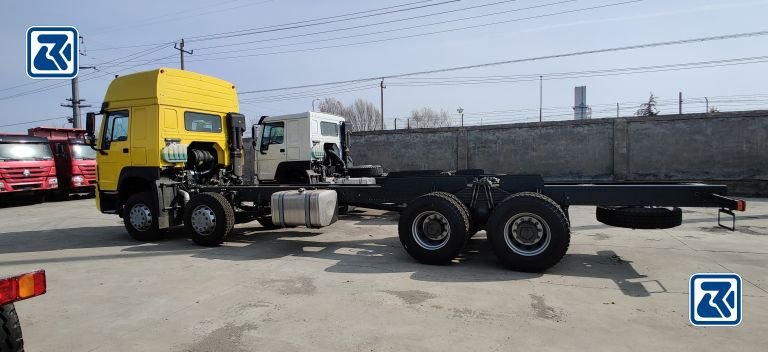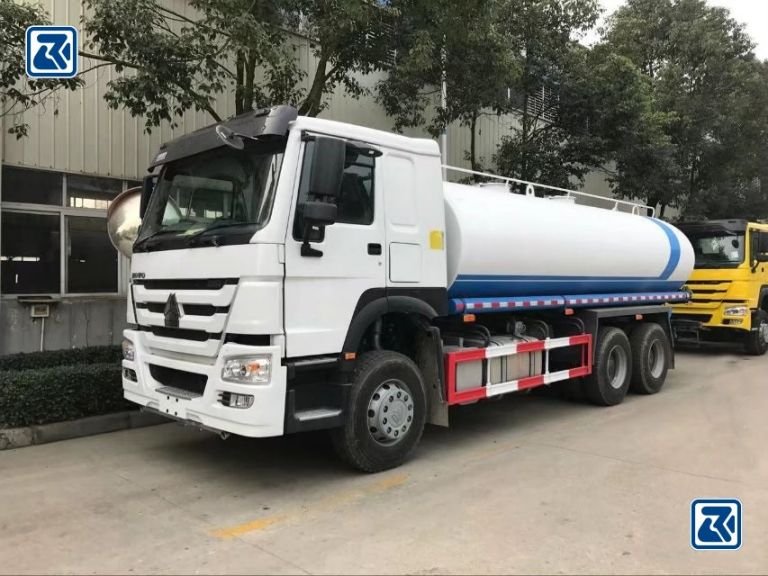The HOWO Cargo Truck from HOWO Special Truck Ltd. is one of the most popular heavy-duty trucks in the Chinese market. This truck has excellent load capacity and stable performance. It is widely used in logistics and long-distance transportation at present. However, the fuel consumption of HOWO cargo trucks has been a challenge for many transportation companies. Therefore it is urgent to take effective measures to reduce fuel consumption.
In this article, we will discuss how to reduce fuel consumption by the following aspects for HOWO cargo trucks:
- Developing fuel-efficient driving habits
- Strengthening vehicle maintenance
- Reasonable arrangement of cargo loading and route planning
- Using fuel-saving technology and equipment
Table of Contents
Choosing the right driving habits to reduce fuel consumption
As a seller of HOWO cargo trucks. We recommend drivers to develop good driving habits to effectively reduce fuel consumption. Here are three simple and practical ways:
Smooth driving, avoiding sharp braking and rapid acceleration
Sharp braking and rapid acceleration will increase fuel consumption and lead to unnecessary waste. So keep driving at a constant speed and avoid stepping on the gas pedal and brake frequently. This saves fuel and reduces wear and tear on your vehicle.
Maintain a reasonable speed
The optimum economical speed is 70-90 kilometers per hour. Driving in this range reduces wind resistance and fuel consumption while ensuring efficient transportation.
Reduce idling
When idling the engine consumes fuel but the vehicle does not move. When stopped for more than two minutes, it is recommended to turn off the engine to avoid wasting fuel.
With these simple driving habits, you can significantly reduce the fuel consumption of HOWO cargo trucks and save operating costs.
Optimize HOWO truck maintenance
Good maintenance of HOWO cargo trucks can effectively reduce fuel consumption. The following are key maintenance measures:
Check tire pressure regularly
Low tire pressure increases tire rolling resistance, leading to increased fuel consumption. Keeping tire pressure within the standard range can reduce resistance and save fuel. Regular tire pressure checks are recommended, especially before long hauls.
Clean or replace the air filter
A clogged air filter can lead to insufficient air intake into the engine and increase fuel consumption. Therefore the filter needs to be cleaned or replaced regularly. This ensures that the engine gets enough air, which improves fuel efficiency.
Make sure the engine is well tuned
The running condition of the engine directly affects fuel consumption. Regularly check and maintain the engine to keep it in good tune. This ensures that fuel is burned properly and wastage is minimized.
Get a tailored quote today and elevate your transport efficiency.
Reducing fuel consumption through rational use of vehicle assistance systems
The extra systems in HOWO cargo trucks, like air conditioning and electronics, can affect how much fuel is used. Reasonable use of these systems can help reduce fuel consumption.
Reasonable use of air conditioning
The use of air conditioning increases the working intensity of the engine, which in turn increases fuel consumption. Especially in summer, leaving the air conditioner on for long periods of time will use more fuel. It is best to use the air conditioner sparingly when traveling at slow speeds or in traffic jams. At higher speeds, the impact of using air conditioning is not as great. Keeping the air conditioning system well-maintained also helps save energy and reduce fuel use.
Reduce unnecessary use of electrical equipment
Things like the radio, GPS, and lights don’t use a lot of power, but if they’re always on, they make the generator work harder, which uses more fuel. It’s best to turn off these devices when they’re not needed, especially when parked or traveling at slow speeds. Using electronics only when necessary will help conserve electricity and reduce fuel consumption.
Intelligent cargo loading and route planning saves fuel
By loading cargo correctly and choosing the best routes, you can help save fuel and avoid wasting extra fuel while driving your HOWO cargo truck.
Balanced cargo loading
When loading cargo, it’s important to keep the weight evenly distributed. If one side is too heavy or there is an imbalance between front and rear loading, it puts more pressure on the truck and makes it use more fuel. Uneven weight also affects tire air pressure, which increases drag and fuel consumption. Keeping the load balanced helps the truck run smoothly, reduces fuel consumption and lowers wear and tear on the tires and suspension, thus extending the life of the truck.
Choose the best route
Careful route planning can save a lot of fuel. Using navigation tools can help you avoid long detours and traffic jams, thus reducing idling and fuel waste. Before each trip, it’s a good idea to use an efficient GPS to pick the shortest, smoothest route. This is especially important for long-distance driving, where avoiding traffic jams and rough roads can save a lot of fuel. Intelligent navigation can also help you find gas stations and rest areas, making your trip more efficient.
Get a tailored quote today and elevate your transport efficiency.
Fuel-saving technologies for HOWO trucks
Using modern fuel-saving technologies and equipment is a smart way to help HOWO trucks reduce fuel consumption. Here are some ways to improve fuel efficiency:
Choose fuel-efficient tires
Fuel-efficient tires help trucks reduce fuel consumption by reducing rolling resistance. The material and tread design of these special tires reduces the friction between the truck and the road. This reduces the engine’s workload, saves fuel and makes the tires last longer. For HOWO trucks, using fuel-efficient tires is a great way to reduce fuel consumption, especially on long trips.
Use of on-board fuel saver
A fuel saver is a device that helps a truck use fuel more efficiently by improving the way the electrical and fuel systems work. Common fuel savers include fuel handling systems and engine control regulators. Fuel handling systems help fuel burn more fully, thus reducing waste. Engine control regulators adjust the way the engine works to use fuel more wisely. Depending on the truck and driving conditions, these devices can save 5-15% of fuel.
Engine optimization technology
Modern fuel-saving technologies can also make HOWO trucks more fuel-efficient. For example, the automatic start-stop system saves fuel by shutting down the engine when the truck is stopped (e.g. at a red light). It restarts the engine when it needs to be driven. Other technologies, such as electronic fuel injection and turbocharging, allow engines to burn fuel more efficiently. Not only do these technologies save fuel, they also improve the truck’s performance and make the ride smoother.
Summary
HOWO Special Truck Ltd. is dedicated to helping our customers save money and make their trucks more efficient. With the advice we share, you can effectively reduce the fuel consumption of your HOWO cargo truck. Whether it’s cultivating smooth driving habits, regular vehicle maintenance (e.g. checking tire pressure, cleaning air filters), rationally planning transportation routes, or using fuel-saving technologies (e.g. fuel-saving tires, on-board fuel savers, and engine optimization technologies), you can significantly reduce fuel consumption.
These measures not only help you save money on fuel in the short term, but also ensure that your vehicles are economical and stable in the long term. Want to learn more about how you can improve operational efficiency? Contact us today for the latest HOWO Cargo Trucks quote and we will provide you with the most suitable solution!




